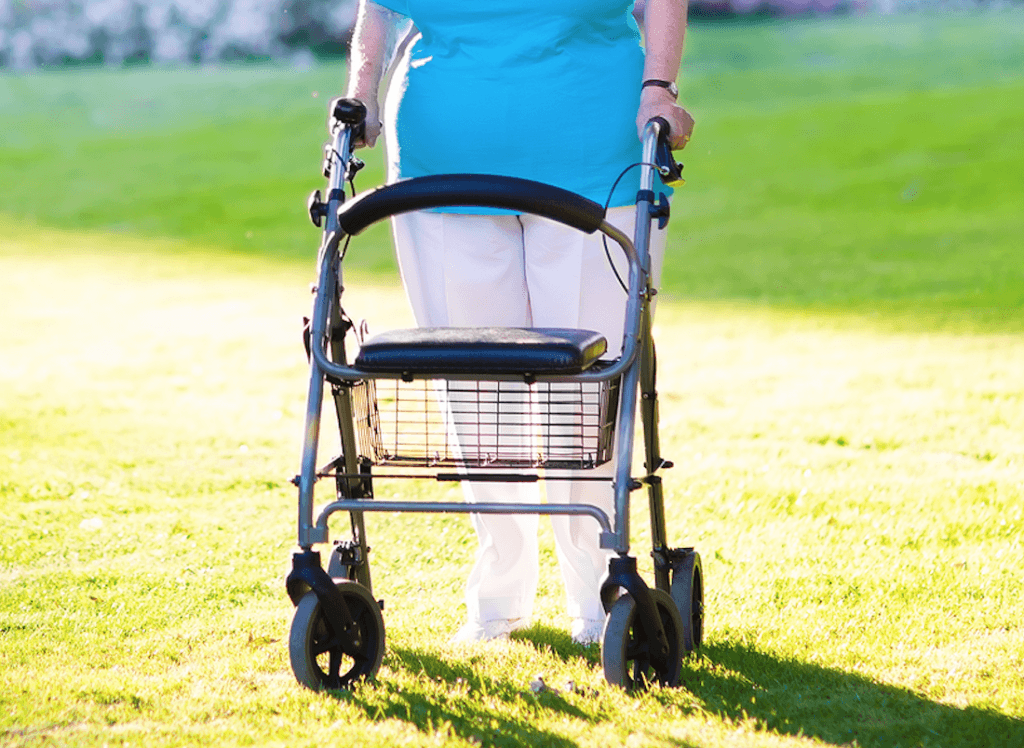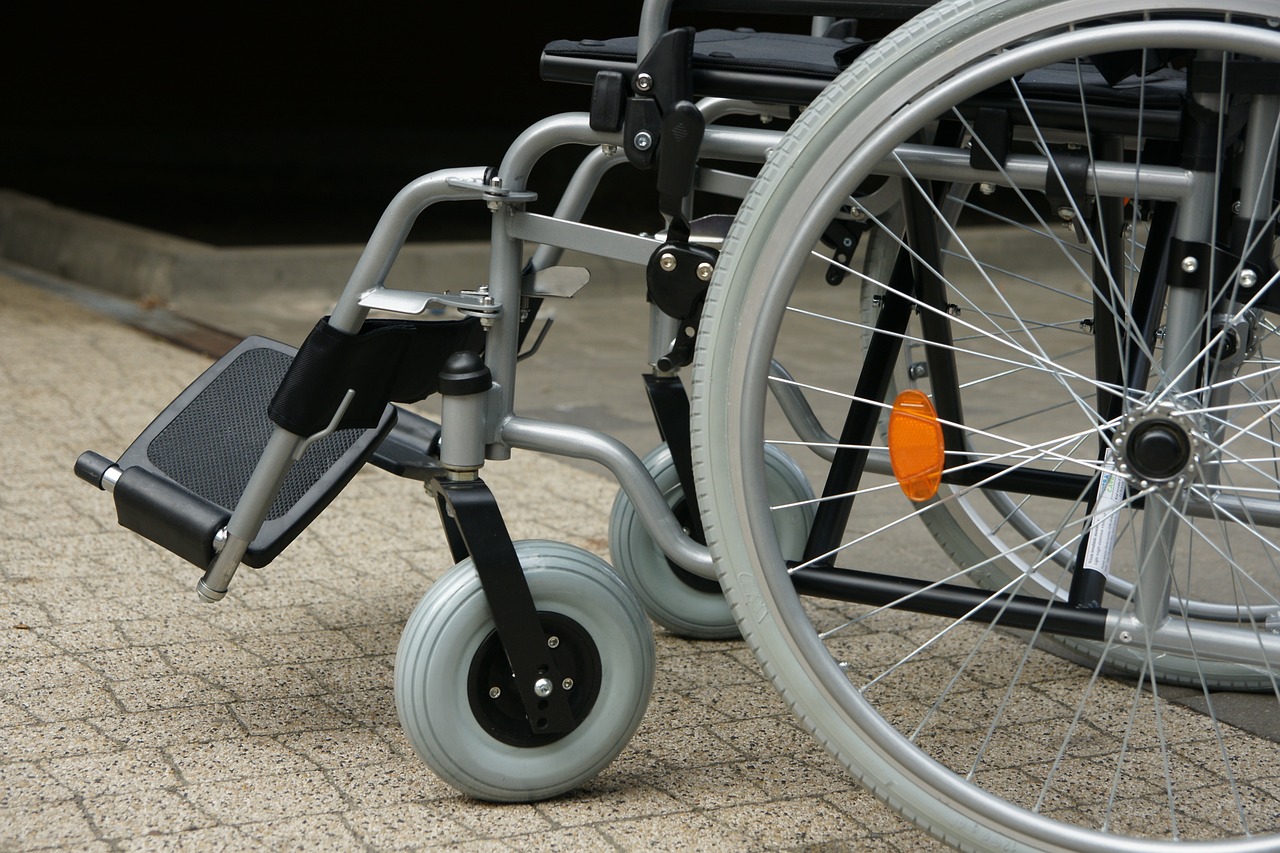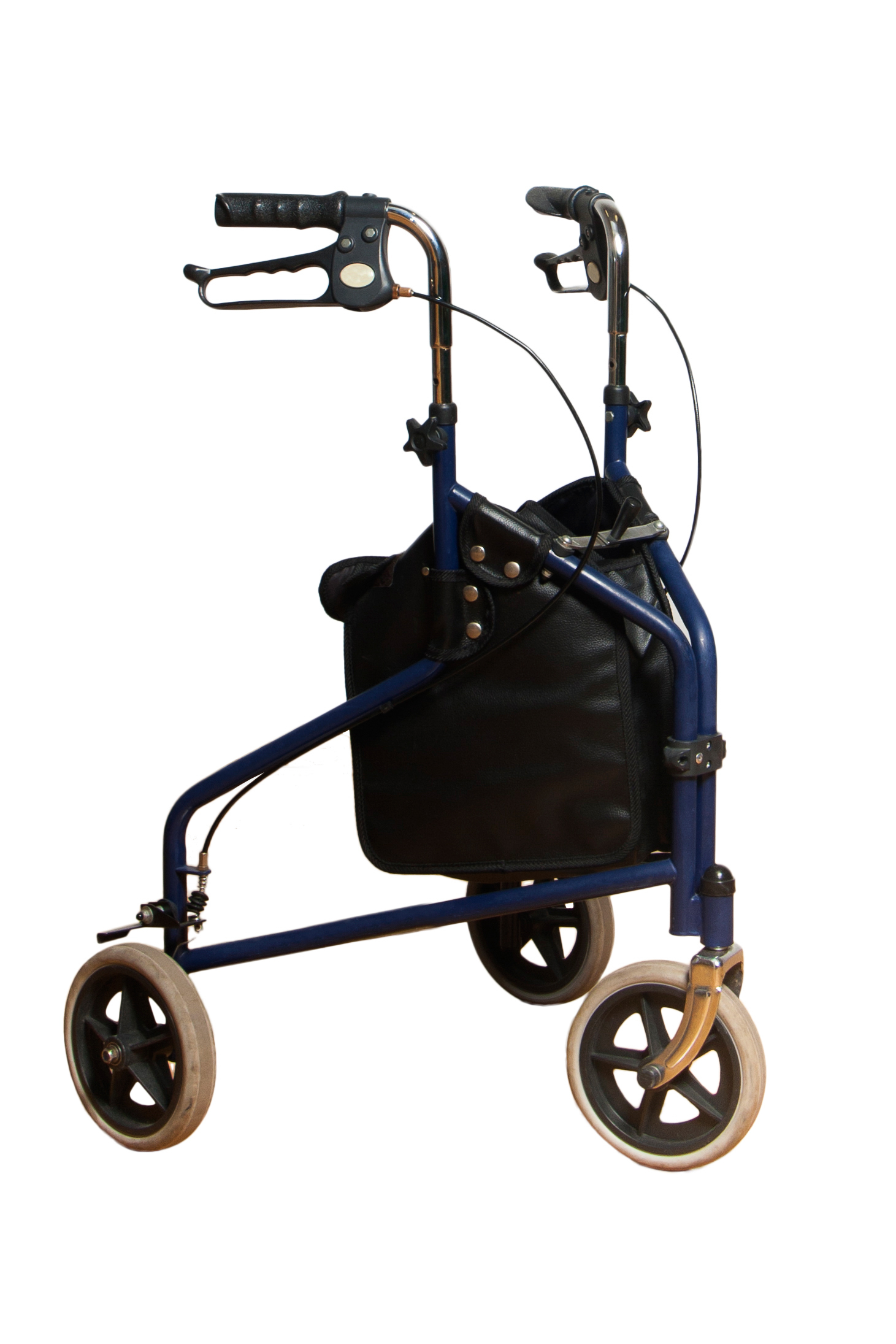Regular maintenance of your walker is key to ensuring it remains safe and reliable – just like any other equipment, your walker needs some TLC to keep it functioning properly.
Don’t fret though, this is pretty easy stuff.
Technically, there are different types of walkers available and each kind might have its own specific maintenance needs.
So, it’s good to know what kind you have and what’s required.
But again, all walkers are pretty low maintenance and we’ll be going over everything you need to know here right now.
| Daily | Weekly | Monthly | |
| Keep clear of cargo/debris | X | ||
| Wipe clean | X | ||
| Check for loose screws/connections | X | ||
| Check rubber tips | X | ||
| Check handles | X | ||
| Test brakes (rollator) | X | ||
| Examine seat (rollator) | X |
Daily and Weekly Maintenance Tasks
I wouldn’t say there are necessarily and daily tasks that need to be done in order to keep your walker in top shape.
Simply keeping it clean and free from excessive cargo is a great start.
I’ve seen many patients in my day that like to load their walkers or rollators with pounds of magazines, clothes, and other stuff and it’s a bad idea for a couple reasons.
First, it makes it a lot harder to propel your walker, which can increase your fall risk.
Second, it puts a lot more stress on your walker, which can lead to unwanted wear and tear.
Regardless of what kind of walker you have, you may want to give it a wipe down every week or so to keep it clean and free from dirt and grime.
This includes keeping the wheels clean too.
It’s smart to keep an eye out for loose or worn parts too.
Look at things like nuts, bolts, and screws to make sure they’re tight. If you notice any wobbling or unusual movements, it’s probably time for a closer look.
Having a few troubleshooting tips up your sleeve can save you a lot of hassle.
For example, if one of the wheels seems stiff or sticks, a bit of lubrication might solve the issue. If a handle feels loose, tightening it up with a suitable tool can often do the trick.
Being proactive can prevent minor issues from turning into major problems.
Monthly and Seasonal Maintenance
Giving your walker a detailed inspection every month helps catch issues that daily checks might miss.
Pay close attention to the structural integrity – look for cracks, bends, or other signs of wear and tear.
Even a small crack in the frame can compromise safety, so replacing worn-out components is crucial.
As parts age, they may not function as effectively.
Keeping spare parts like rubber tips (or tennis balls) at hand can save time and stress when a replacement is needed.
Weather changes can affect your walker, especially if you use it outdoors.
In rainy or snowy conditions, make sure the rubber tips have a good grip and update them if they’re worn.
If the walker gets wet, dry it off to prevent rust.
When it comes to rollators, you have to keep an eye on the brakes to make sure they’re still holding tightly when locked.
Rollator brakes have a tendency to loosen over time, which can lead to the rollator sliding or moving on ya when trying to sit on it.
If you notice your brakes are having a hard time keeping your rollator stationary, it’s a good idea to have a professional take a look.
If you’re working with a physical therapist, they may be able to tighten ’em up a little for ya; otherwise, you may be able to take it to a durable medical equipment (DME) company for repairs.

Professional Maintenance and DIY Repairs
Knowing when to seek professional help can save you from potential hazards.
If you notice severe issues like metal fatigue, deep cracks, or problems with the folding mechanism, it’s likely time to consult an expert (or consider buying a replacement).
Your best bet in these cases would be to look for a local DME company in your area and check with them to see if they all willing to make repairs.
Depending on the severity of the issue though, you may be better off simply purchasing a new walker.
Helpful tip: if you have Medicare insurance, they’ll usually pay for a new walker every 5 years.
Common DIY repairs are entirely doable though.
Things like replacing rubber tips, tightening screws, or swapping out worn handgrips don’t require specialized tools or skills.
These extra parts can be purchased easily online, at pharmacies, or many retail stores like Target.
Final Thoughts
That’s really about it.
Walkers and rollators don’t require much maintenance, it’s mostly just about making sure screws stay tight and handles and rubber feet stay in good shape.
With rollators, you have the additional task of making sure the brakes and seat function properly, but that’s not difficult.
And of course it’s always a good idea to keep your assistive devices clean and free of debris.
I hope you found this guide helpful and if you have any questions or comments, please leave ’em below.
And remember – if you take care of your walker, it’ll take care of you.



